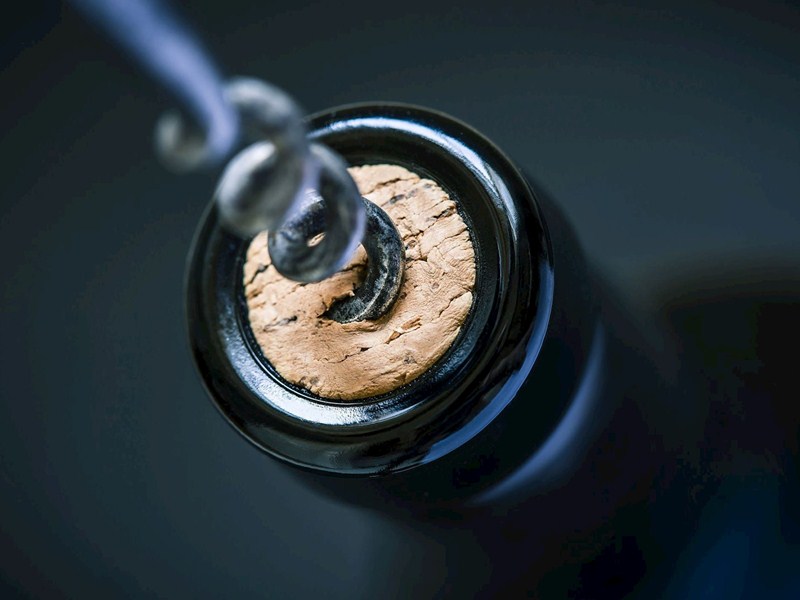We’re a nation of wine drinkers, but we don’t always know how to get the best out of a bottle. Sam Wylie-Harris discovers the answers to our most-asked questions.
Whether we’re at home or away, the ritual of opening a bottle is as much about having a good time as it is about the wine. But sometimes, there can be a nagging thought in the back of our minds.
Is this wine ready to drink? Am I serving it in the right glass? Do I know where it’s from? Feeling like a wine bluff – as opposed to a buff – can leave us a little red in the face, without having touched a drop of that New World cabernet sauvignon.
So, to enhance your wine pleasure and answer any pressing questions from the grapevine, here are a few that crop up time and time again…
1. How can I buy a bottle of wine without feeling intimidated?
We’ve all felt the fear… walking into a wine shop and not quite knowing where to begin. For starters, buying wine should be a happy experience, so make sure you choose a good wine shop (not too stuffy, not too large and impersonal) where the staff are approachable, knowledgeable and hold regular wine tastings.
Otherwise, you can get to grips with the wine world by buying online, or joining a wine club who will keep you up to date with newsletters, special offers and wines from off the beaten track.
2. Screw cap or cork – and does it even matter?
Firstly, there’s nothing wrong with a screw cap. They’ve shed their shady past of being associated with cheaper wines and because they’re consistent, they keep the wine fresh and reliable every time. Winemakers, especially in New Zealand and Australia, favour them for higher-end bottles as well as weekday wines.
Corks have been around for eons and while we love the theatre of one being pulled, they are susceptible to cork taint. However, many winemakers believe they’re essential for ageing, because full-bodied wines benefit from a little oxygen, which the cork naturally allows the wine to absorb.
3. How do I taste wine like a pro?
Look, swirl, smell, sip. Sounds easy enough. Pour the wine, tilt the glass and note the colour and clarity of the wine. Swirl the glass to release the aromas and think about the fruits at the fore, which could be citrus or tropical in a white, or bright cherry and strawberry fruit in a red.
Take a sip, taste the wine and think about the texture and length. Did you like it? Did it leave you looking forward to the next sip (or glass)? Make a mental note and the more you taste, the more you’ll learn.
4. Does vintage matter and which one should I buy?
Generally speaking, the current vintage for white wine represents grapes that were harvested one to three years ago, depending on the style of wine. For red wines, the current vintage is usually from one to four years ago.
When it comes to fine wines such as Bordeaux, a good vintage will be reflected in the price and there may be several vintages (check the year to see if it’s ready to drink) available at any one time. The thing to remember is that wine is constantly evolving and can delight as well as disappoint.
5. How can I understand a wine label?
New World producers (from Australia, New Zealand, South Africa, South America, USA) don’t shy away from putting their name and grape variety on the label, which indicates the style of the wine. So if you’re a pinotphile (lover of pinot noir), you can easily hunt down a Chilean, Californian or Kiwi pinot.
However, Old World wines (from Europe) go by region or village, which can be very confusing if you don’t know your Sancerre (sauvignon blanc), from your Chablis (chardonnay). Thank goodness the internet can tie up any loose ends.
6. Which glass should I be drinking out of?
Most wine critics prefer a larger glass, so a generous red wine vessel is best for whites and reds. For champagne or sparkling wine, a glass with a larger rim diameter will enable the aromas to be released, which doesn’t happen with a traditional, narrow flute.
For a one-stop shop for stemware, visit Riedel. We recommend the Riedel Performance Tasting Set (£90 for four glasses – each specifically designed to reward you with the best possible tasting experience from a specific grape), but if your budget can’t stretch to that, Marks & Spencer sell great four-packs for under £30.
7. When should a wine be decanted?
Usually, a wine is decanted when it needs to be separated from the sediment, which is generally only present in older red wines – say 10 years plus, such as a Bordeaux or vintage port.
Timing-wise, once the wine has been left standing upright for at least a day or so, uncork and pour the wine into a decanter less than an hour before drinking. Otherwise it might become dull and tired by the time it’s served.








